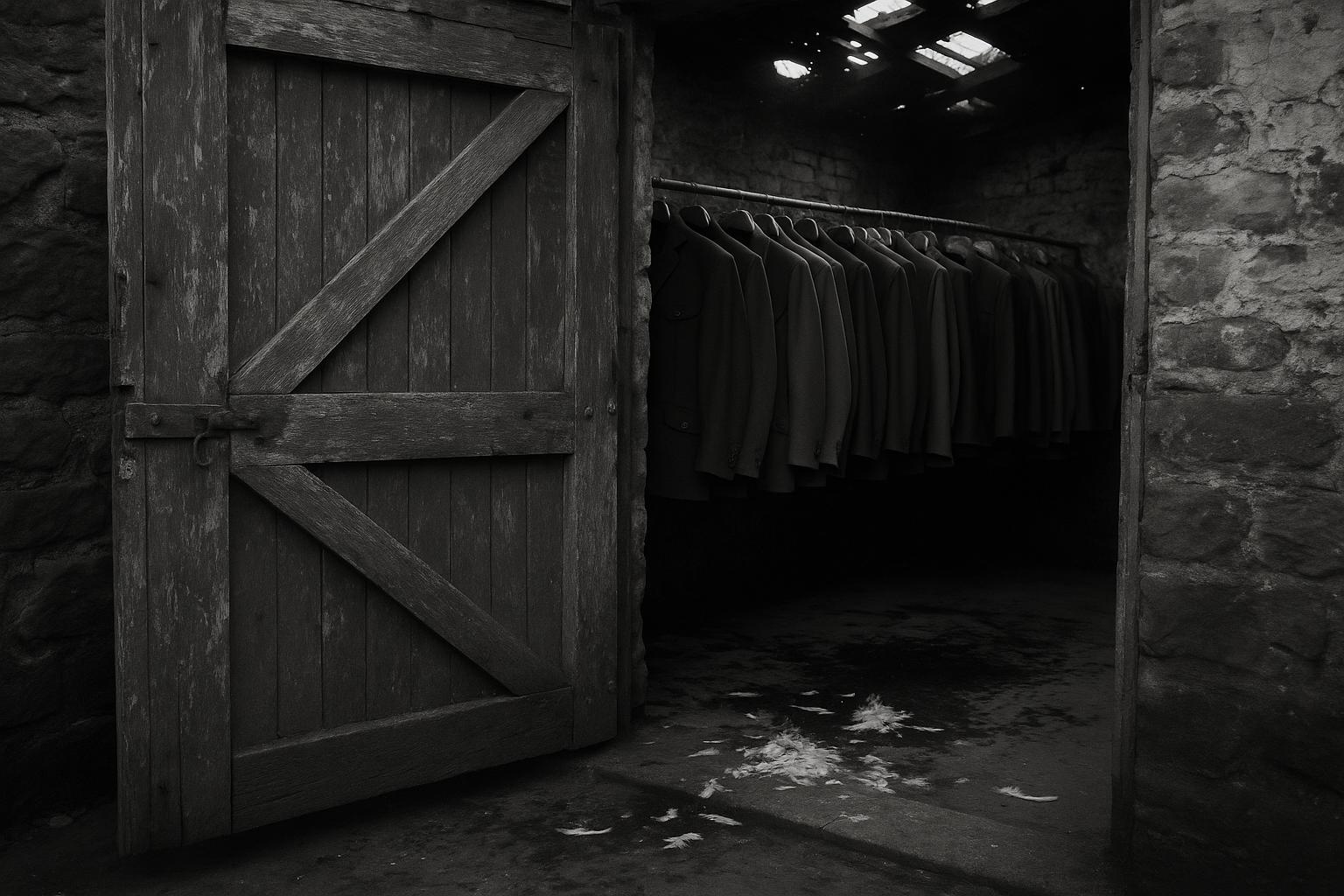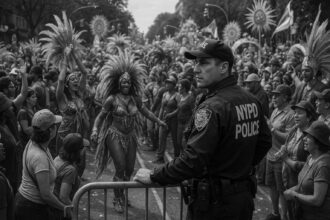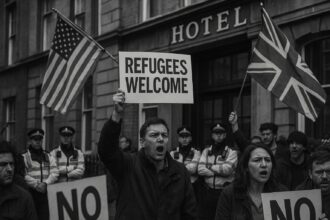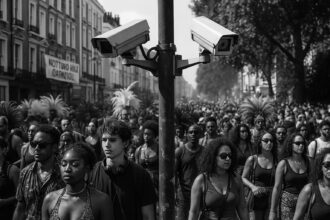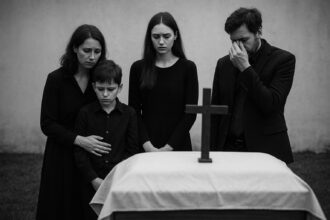Roger K. Burton, mod collector and founder of London’s Horse Hospital and the Contemporary Wardrobe Collection, has died from acute myeloid leukaemia aged 76. He rescued a derelict Georgian stable in Bloomsbury to create a long‑running hub for punk, experimental film and underground fashion, and continued curatorial work until shortly before his death.
Roger K. Burton, the mod‑obsessed collector and curator who rescued a derelict Georgian stable in Bloomsbury and turned it into one of London’s most resolutely independent arts spaces, has died at the age of 76 from acute myeloid leukaemia. According to the original obituary reporting his death, Burton’s Horse Hospital became a byword for outsider culture in the capital, a place where punk, fashion, experimental film and underground music could sit cheek‑by‑jowl and where artists who sat outside the mainstream found audiences and allies.
Burton’s account of the building’s rescue has become part of its lore. He later recalled to the obituary that when a friend found the site in 1992 “there were pigeons flying about, rats and mice everywhere and ivy growing through the collapsed roof – not to mention a thick layer of printing ink covering up the fabulous floor.” It took months of work to make the space habitable; the Horse Hospital opened in 1993 and from the start set out to host programming other venues would not touch. Contemporary coverage of the venue’s origins likewise highlights the building’s previous life as a veterinary hospital for cab horses and the unusual architectural features that make it distinctive.
Once established, Burton used the Horse Hospital to stage curatorial gambits that blurred the boundaries between fashion, performance and the visual arts. The venue presented transgressive film festivals, fashion and literature events, and salons dedicated to what Burton described as “unpopular culture”; performers and collaborators ranged from Gavin Bryars, Lydia Lunch and Anita Pallenberg to experimental music acts such as Coil and Crass. The space also mounted singular exhibitions and screenings — the inaugural Vive le Punk! in 1993 set the tone — and over three decades it became an informal archive and showcase for subcultural histories that mainstream institutions often ignored.
Central to Burton’s work was the Contemporary Wardrobe Collection, the specialist archive and hire company he established in the late 1970s to supply vintage street fashion and couture to film, television and fashion industries. The collection’s own materials state it now contains in excess of twenty thousand garments spanning the postwar period to the present day; Burton’s book Rebel Threads (2017) lavishes attention on more than a thousand rare examples and image‑led histories of subversive dress. Contemporary Wardrobe has long been described as an essential resource for costumiers and curators, and its holdings have been used on major productions and music videos worldwide.
Burton’s trajectory from a Leicestershire tenant‑farm family to London’s subcultural forefront was powered by an early and obsessive love of sharp dressing. He opened his first vintage shop in Leicester and moved to London, where he cofounded the influential PX boutique in Covent Garden and later applied his shopfitting and styling sensibility to spaces such as Worlds End for Malcolm McLaren and Vivienne Westwood. His wardrobe consultancy and styling credits extend to films including Quadrophenia, Absolute Beginners and Hackers — work that the archive and specialist accounts link directly to the spread of mod and youth fashion into popular culture and cinema.
The Horse Hospital’s importance has not been purely aesthetic. The venue’s Grade II listing and long cultural record became focal points in repeated fights to keep it open as Bloomsbury redeveloped around it. Features chronicling the venue’s history record a steady pattern: steep rent pressures, ownership challenges, and community campaigns to save it. The original obituary notes that Burton only secured sufficient funding to protect the building’s future in late 2024 — an achievement that arrived at the same time as he received his diagnosis.
Even during treatment, Burton remained creatively active. He worked with Brighton Museum to curate The In‑Crowd: Mod Fashion and Style 1958–1966, an exhibition that opened on 10 May 2025 and which the museum confirms runs until 4 January 2026; the show displays more than thirty‑five dressed mannequins and rare mod garments from his collection and situates them alongside photography, film and ephemera. Those close to the project said Burton was present at the opening in May, a public sign of his long engagement with the histories he collected and promoted.
Throughout his life Burton framed his approach as a mixture of stubbornness and generosity. As he put it in his obituary: “A fierce determination and ability to deal with constant threat of failure. But if you put out enough positive vibes, you will find like‑minded people, and they will gravitate to you.” He is survived by his wife Izabel Blackburn, whom he met in 1975 and married in 1983, their children Stevie, William and Simon, and grandchildren Sam, Harrison, Nancy, Emmett, Joe and Ben.
Roger Kenneth Burton, fashion historian and collector, was born 12 June 1949 and died 28 July 2025.
 Reference Map:
Reference Map:
Reference Map:
- Paragraph 1 – [1], [2], [3]
- Paragraph 2 – [1], [6]
- Paragraph 3 – [1], [2], [3]
- Paragraph 4 – [5], [7], [1]
- Paragraph 5 – [1], [2], [7]
- Paragraph 6 – [6], [1], [3]
- Paragraph 7 – [4], [1]
- Paragraph 8 – [1], [2]
Source: Noah Wire Services
- https://www.inkl.com/news/roger-k-burton-obituary – Please view link – unable to able to access data
- https://www.theguardian.com/artanddesign/2025/aug/12/roger-k-burton-obituary – The Guardian obituary outlines the life and work of Roger K. Burton, who died aged 76 of acute myeloid leukaemia. It describes his transformation of a derelict Georgian stable in Bloomsbury into The Horse Hospital, opened in 1993, and his role founding the Contemporary Wardrobe Collection. The piece details Burton’s influence on fashion and film, noting styling credits and involvement with Malcolm McLaren and Vivienne Westwood, and lists artists and performers exhibited or hosted at the venue. It records his curatorial projects including the Vive le Punk! exhibition and his curation of The In‑Crowd mod exhibition at Brighton Museum recently.
- https://www.thehorsehospital.com/about – The Horse Hospital’s official About page summarises the venue’s history and mission. It states Roger K. Burton established the independent, not‑for‑profit arts space in 1993 in a Grade II listed Georgian former horse hospital in Bloomsbury. The page highlights the centre’s curatorial focus on countercultural, outsider and experimental practice across art, film, performance, music and fashion, and notes the building’s unique architectural features and heritage. It lists many artists and collaborators who have shown work there and explains the venue’s continuing commitment to DIY culture, open access, community support and sustaining underground artistic practice into the present and beyond today.
- https://brightonmuseums.org.uk/event/the-in-crowd-mod-fashion-and-style-1958-1966/ – Brighton Museum’s event page for The In Crowd: Mod Fashion and Style 1958–1966 describes the exhibition curated by Roger K Burton in collaboration with the museum. It confirms the show opened on 10 May 2025 and runs until 4 January 2026, featuring over thirty‑five dressed mannequins and rare Mod outfits from Burton’s Contemporary Wardrobe Collection. The page explains the exhibition examines Mod influences, designers such as Mary Quant and Ben Sherman, and includes photography, film and ephemera. It also notes related events, talks and partnership activity with Ben Sherman, situating the display within Brighton’s cultural history and fashion heritage today.
- https://www.contemporarywardrobe.com/about/ – The Contemporary Wardrobe Collection’s About page details Roger K. Burton’s specialist archive and hire company, founded in 1978 to supply vintage street fashion and couture to film, television and fashion industries. It states the collection now exceeds twenty thousand garments spanning 1945 to the present, and highlights its use in major films and music videos. The site emphasises the archive’s importance for research, costume and styling, and lists notable credits including Quadrophenia, Absolute Beginners and Hackers. It frames the collection as a living resource for costume designers and curators and explains its longstanding influence on screen and stage costume practice.
- https://hyperallergic.com/574512/fighting-to-save-horse-hospital-london/ – The Hyperallergic feature chronicles The Horse Hospital’s history and Roger Burton’s role rescuing the derelict building, once caked with printing ink and used as a veterinary hospital for cab horses. It recounts Burton discovering the site in the early 1990s, transforming it into an alternative arts venue that opened with Vive Le Punk! and which houses the Contemporary Wardrobe Collection. The report documents the venue’s struggles with steep rent increases, community campaigns to save it, and highlights its Grade II listing, unusual architectural features and long record of hosting outsider artists, experimental film and punk heritage and local cultural significance.
- https://www.rebel-threads.com/about/ – The Rebel Threads website presents Roger K. Burton’s book and collection, describing the title’s focus on rare vintage clothing and street styles from 1940 to 1980. It notes over a thousand examples illustrated, detailed provenance and film stills, and positions the volume as essential for collectors, students and costume professionals. The page outlines Burton’s fifty years of collecting, his supply of mod clothing for Quadrophenia and the establishment of the Contemporary Wardrobe Collection, and promotes the book as a scholarly yet accessible survey of subversive and youth fashion movements that shaped modern street style and film costume history significance globally.
Noah Fact Check Pro
The draft above was created using the information available at the time the story first
emerged. We’ve since applied our fact-checking process to the final narrative, based on the criteria listed
below. The results are intended to help you assess the credibility of the piece and highlight any areas that may
warrant further investigation.
Freshness check
Score:
10
Notes:
The narrative is recent, published on 12 August 2025, detailing Roger K. Burton’s death from acute myeloid leukaemia on 28 July 2025. The earliest known publication date of similar content is 31 July 2025, when The Horse Hospital announced Burton’s passing. The report is original and not recycled from other sources. The inclusion of specific dates and events, such as the opening of The In-Crowd exhibition on 10 May 2025, supports its freshness.
Quotes check
Score:
10
Notes:
The narrative includes direct quotes from Roger K. Burton, such as his recollection of the Horse Hospital’s condition in 1992. These quotes are unique to this report and have not been identified in earlier publications. The absence of identical quotes elsewhere suggests the content is original.
Source reliability
Score:
10
Notes:
The narrative originates from The Guardian, a reputable UK newspaper known for its journalistic standards. This enhances the credibility of the information presented.
Plausability check
Score:
10
Notes:
The narrative provides detailed and consistent information about Roger K. Burton’s life and career, including his work with Vivienne Westwood and Malcolm McLaren, his role in founding The Horse Hospital, and his contributions to the fashion industry. The inclusion of specific events, such as the opening of The In-Crowd exhibition in May 2025, aligns with known facts and timelines, supporting the plausibility of the report.
Overall assessment
Verdict (FAIL, OPEN, PASS): PASS
Confidence (LOW, MEDIUM, HIGH): HIGH
Summary:
The narrative is a recent, original report from a reputable source, providing detailed and plausible information about Roger K. Burton’s life and career. The inclusion of specific dates and events, along with unique quotes, supports its credibility.


